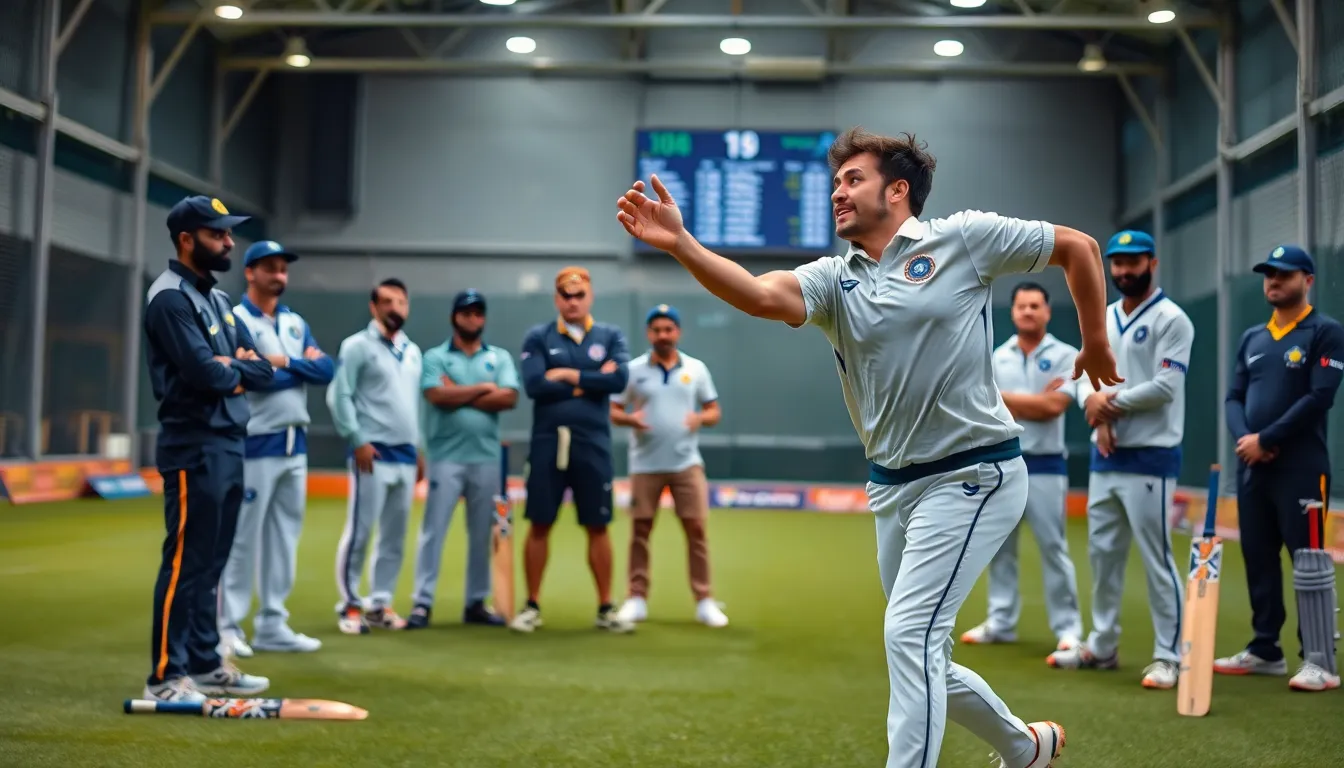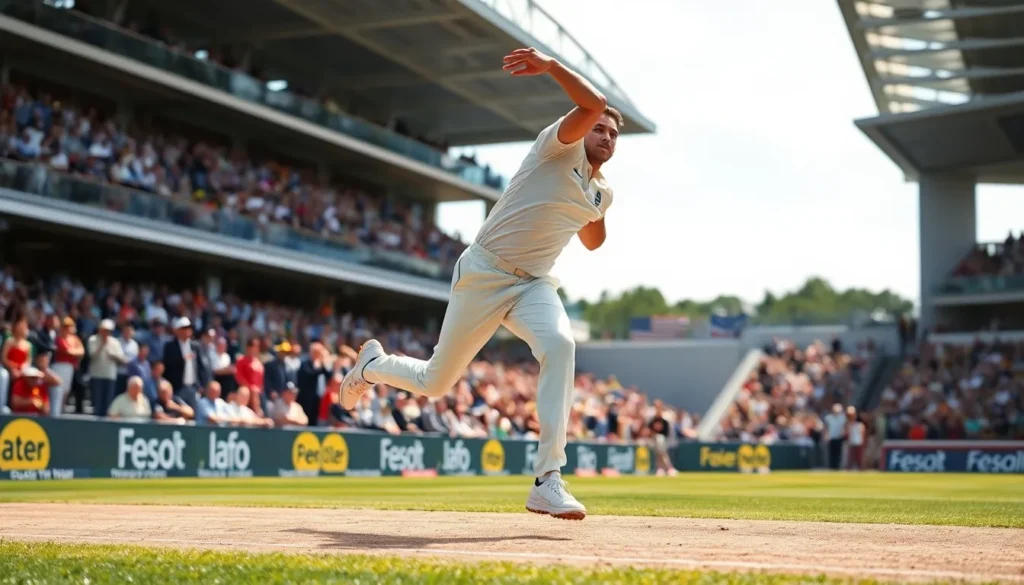Table of Contents
ToggleHave you ever wondered what it feels like to face a ball hurtling toward you at speeds faster than a cheetah? Fast bowlers are the superheroes of cricket, defying gravity and physics with each delivery. The quest for speed in bowling isn’t just about brute strength: it’s a fascinating blend of technique, technology, and the ever-pressing desire to break records. In this text, we’ll explore everything from the evolution of bowling speeds to the incredible athletes who have left their mark on the game. So buckle up, because we’re about to take a thrilling ride through the world fastest bowler.
Introduction to Fast Bowling

Fast bowling is an art form in the world of cricket that combines speed, precision, and strategy. These bowlers are the frontline warriors of their teams, often determining the outcome of a match with their ability to deliver the ball at blistering velocities. The thrill of seeing a bowler sprinting in and unleashing a delivery can electrify even the most indifferent spectators. But what exactly defines a fast bowler? Generally, any bowler who consistently exceeds speeds of 85 mph is classified as a fast bowler. Beyond mere numbers, it involves a unique blend of skills such as rhythm, timing, and the ability to read the batsman’s mindset. Fast bowlers not only rely on speed: they also bring variations in pace and movement, making them a formidable force on the field.
The Evolution of Bowling Speeds
Historically, the evolution of bowling speeds has been nothing short of extraordinary. In the early days of cricket, bowlers typically operated in the realms of moderate pace, averaging around 60-70 mph. But, as the game progressed, advancements in training, fitness, and equipment have all contributed to a dramatic increase in bowling speeds. The 1990s marked a turning point in this evolution, with legends like Wasim Akram and Glenn McGrath pushing the boundaries of what was possible. Today, it’s not uncommon to see bowlers regularly surpassing speeds of 90 mph, and in rare cases, even breaking the elusive 100 mph mark. The science behind this evolution is not just about physical development: it’s also about understanding mechanics and utilizing modern training methods to hone their skills.
Notable Fast Bowlers Through History
The Record-Breaking Speeds
When discussing notable fast bowlers, a few names stand out for their astonishing speeds and ability to redefine the game. Shoaib Akhtar, known as the ‘Rawalpindi Express’, holds the record for the fastest recorded ball in cricket history at 161.3 km/h (100.23 mph). His raw pace and aggressive bowling style struck fear into the hearts of batsmen worldwide. Then there’s Brett Lee, whose fiery deliveries consistently hit speeds above 150 km/h, combining sheer speed with excellent line and length. Other names like express deliverers like Dale Steyn and Mitchell Starc have captivated audiences, constantly enticing curious minds to wonder: just how fast can they bowl? These athletes not only set records: they also inspire future generations to pursue the art of fast bowling.
Analysis of Bowling Techniques
Understanding the techniques behind fast bowling adds a layer of appreciation for these incredible athletes. Speed isn’t just about muscle: it’s also about biomechanics and technique. Fast bowlers use a combination of their run-up, delivery stride, and wrist position to maximize their speed. The “coiled spring” effect is often referenced in this context: bowlers generate power as they run up and deliver the ball, akin to a dog launching out of a crouched position.
This technique requires exceptional timing and coordination. A bowler’s wrist position, angle of delivery, and the placement of their non-bowling arm significantly affect the speed and movement of the ball. Also, variations like the bouncer and yorker are essential tools in a fast bowler’s arsenal, showcasing their ability to outsmart batsmen, proving that speed combined with strategy can lead to impressive results.
Impact of Technology on Fast Bowling
In today’s digital age, technology plays a critical role in enhancing fast bowlers’ performances. Analyzing their modes of delivery using high-speed cameras, bowlers and coaches dissect every element of a delivery, making adjustments that were unimaginable in previous decades. Tools like biomechanics analysis software and motion tracking systems enable athletes to fine-tune their techniques, almost in real-time. Besides, wearables and fitness trackers help bowlers monitor their training regimes, allowing them to maximize their physical potential.
Technology also extends to equipment, with advancements in bat and ball design enhancing the physics of the game. Specialist shoes that aid bowlers in run-up speed and grip contribute to achieving that elusive extra mph. The combination of technology and skill propels fast bowlers closer to previously unattainable speeds, continuously pushing the boundaries of the sport.
The Future of Fast Bowling
As we look toward the future, the world of fast bowling remains an exciting realm of possibilities. With new generations of athletes emerging, the bar for speed is likely to be raised even higher. Innovations in training methodologies, nutrition, and rehabilitation are paving the way for faster and more resilient bowlers. It’s not just about speed anymore: it’s also about sustaining peak performance throughout the grueling demands of modern cricket.
Also, the integration of data analytics into game strategies is expected to provide fast bowlers with deeper insights into batsmen’s weaknesses and preferences, allowing them to tailor their bowling styles accordingly. The future of fast bowling looks bright, driven by determination, engineering, and the relentless human spirit to break records.





